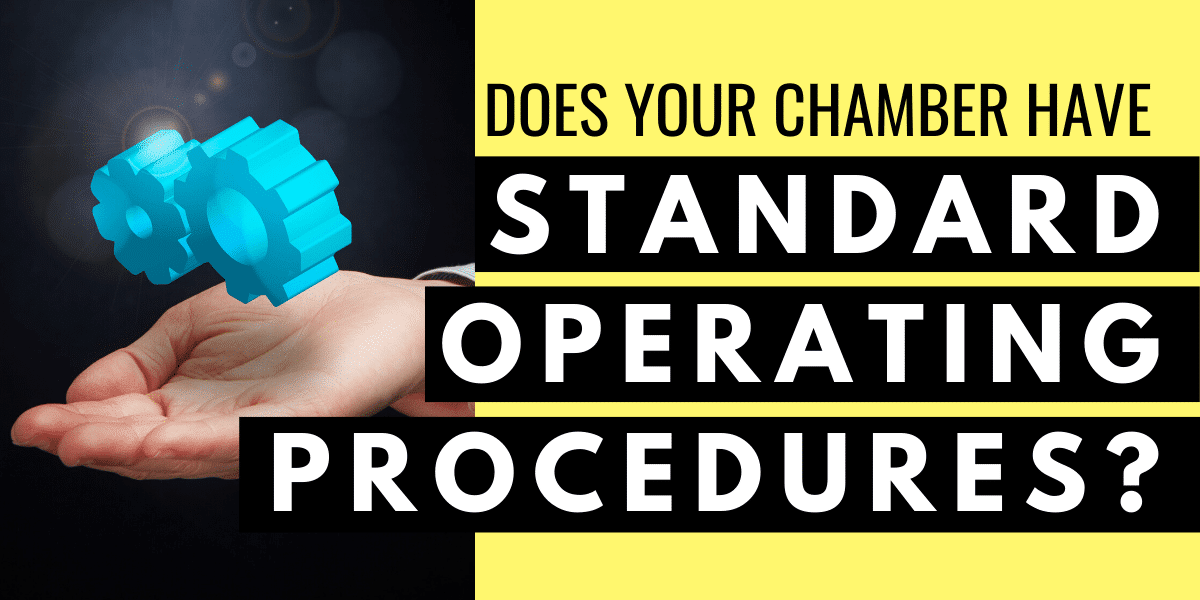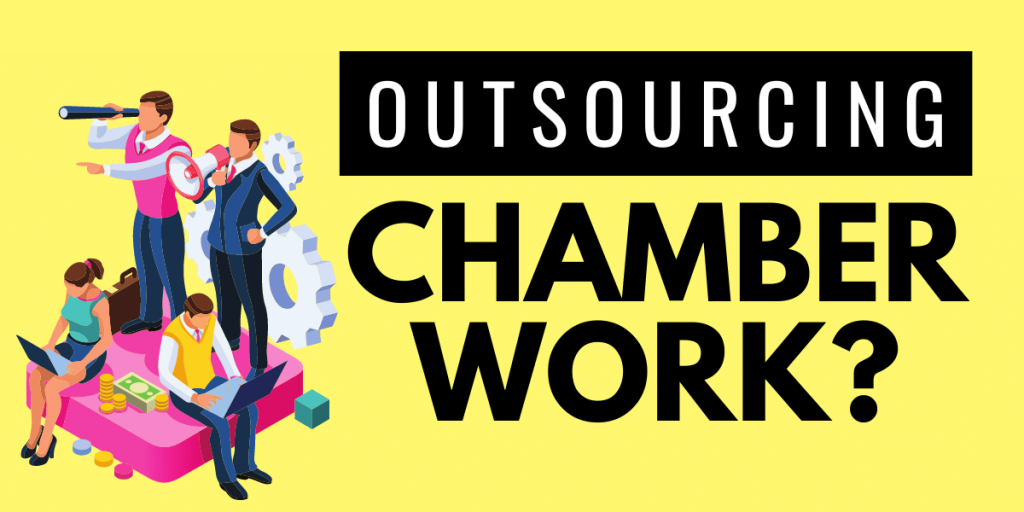At the core of every business is its processes – and you should be running your chamber of commerce like a business. You perform tasks every day, but have you ever taken the time to actually map them out and document them? Representing your workflow in this way offers a number of benefits for your chamber.
One key benefit is that onboarding and training new employees/interns/volunteers becomes much easier. It also will help you to be more efficient with your time and remember where you left off after being interrupted.
Why You Should Document Your Processes & Procedures
Documenting your chamber’s procedures & processes helps you to train new team members or volunteers, helps whoever has to step in and help if someone has to call out, and even yourself when you just can’t remember what you did last year!
Plus, by investigating each process closely, you can look at ways to streamline and improve, making your business more efficient.
You can also look for ways to standardize, delegate, outsource, or automate, saving you more time and making life generally easier for everyone in your organization.
Representing Your Organization Processes Visually
The best way to document your business processes is to do it visually. It’s much easier for a new staff member to understand the workflow from a diagram representation than a piece of text content.
Business processes are basically mapped out in flow charts or variations of flow chart. A flow chart shows each step of a process in a square or other shape connected by lines or arrows. It illustrates how the task moves from start to finish.
Beyond the Flow Chart
Flow charts offer the most basic visual representation, but there are a few variations on this type of diagram that are useful for business processes.
The Swimlane Diagram
A swimlane diagram shows a process from start to finish but divides it into “lanes.” These are columns for different stakeholders, facilities, departments, or resources. It shows more clearly who is responsible for which part of a task.
Value Stream Map
A value stream map is a more complicated diagram where the work doesn’t just flow one way but in all directions. It’s useful for complex tasks that require multiple departments and stages, or that might be modular.
If it seems overwhelming, don’t worry, just start out with a whiteboard or some post it notes and see where your thoughts lead you. If you’re not sure where/how to connect things, the above can help you visualize it.
Seek Stakeholder Feedback
Don’t document your Chamber’s processes all alone. Seek the advice and feedback of other stakeholders, especially if they’re the ones that are usually in charge of the process. You’ll also want feedback after documentation to make sure it’s clear and easy to understand.
Usually this will be yourself or other staff, but board members and volunteers can also have some really great ideas or perspectives. You can also have them draft their own notes for their successors.
Start with the Big Picture
When teaching new employees a process, you have to start by giving them the big picture view of the task. Explain where this task fits into your overall organization and what specific goal it’s meant to achieve. By starting with your why, your new employee or volunteer can better serve you, and might even come up with some great ideas of their own. But they won’t know your end goal if you don’t tell them.
At the beginning of the process, give them the resources and tools they need and what other preparations there are, if any. For your documentation, you may start with a brief summary that explains this.
Create an Archive of Resources
Create an archive of all your projects & processes and make it available to staff members. Encourage them to refer to these protocols as they learn. It will take some time before the job becomes second nature to them.
My chamber started documenting our own jobs in Word documents and we saved them to a shared Dropbox. Just make sure this is done through a shared account in case the person managing it leaves and you get rid of their email. Our main shared accounts (like Dropbox) were set up through our [email protected] email address.
Simple Ways to Get Started
As I mentioned, my chamber started documenting our processes by having each staff member start taking notes in a simple word document and saving it to a shared cloud like Dropbox. I have one big set of notes labelled ‘succession planning’ and a folder of checklists (like my Ribbon Cutting checklist) that are also just word documents.
Some other processes I started on my own are: creating a work-flow for events with checklists in Tello, creating blog/video libraries with checklists in Airtable (like this one for videos), and creating short video tutorials that I publish as ‘Unlisted’ on YouTube and link to in my succession document.
Basically:
- Start with a task or thing you do all the time.
- Document it in whatever software/system you’re most comfortable with.
- Update it as you think of changes or new things.
After doing this for a few projects, you will have naturally started a library of SOPs – Standard Operating Procedures – that you can use to train or support others.
I hope this post inspired you to start documenting your common tasks & processes. Next I recommend you read about outsourcing these documented tasks:






